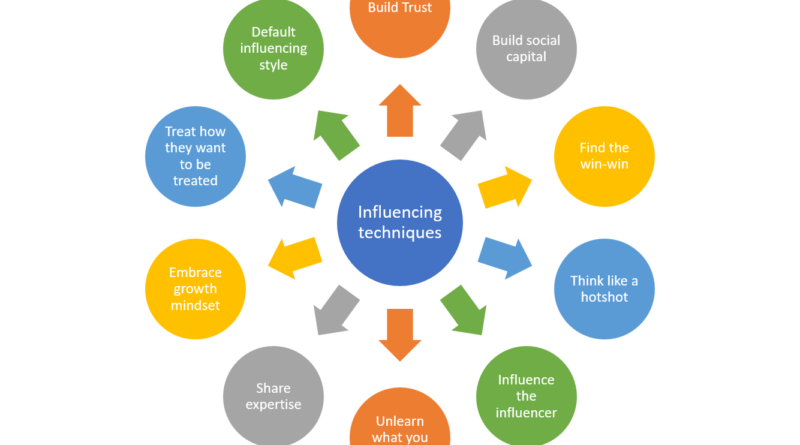Ten tips for Influencing without Authority
Influencing skill is one of the most valuable leadership traits. This skill is particularly important to Program Managers since we must influence cross functional team members over whom we have no authority. We do have some positional authority due to our role however, not enough to get things done.
Influence is the art of getting things done by working collaboratively without relying on title or authority. Some people might naturally be good at this and for some this is a skill that they can acquire over time with intention and practice.
The first step we need to do before trying to influence someone is identify our goals and priorities. Determine your primary goals and secondary goals. Identify if the secondary goals can be negotiated away. Determine if your priority is task accomplishment or preserving / improving the relationship?
Once you are clear on your goals and priorities, next step is to figure out which influencing technique would work. It is valuable to have a repertoire of techniques and you should choose the one that would be appropriate for the situation and the person.
Here are 10 smartcuts for influencing:
1. Build trust
Influence is based on a foundation of trust and credibility that has been solidified over time. We cannot build trust overnight. Continually deliver on your promises to build the trust and be transparent when there are roadblocks. Encourage others to express their honest opinions, concerns doubts.Give open, honest, and constructive feedback.
2. Build social capital
Instead of limiting yourself to your role, offer help. Volunteer to help with mentoring or any other initiatives within your company that you are passionate about outside of your immediate role. You will get to network with people across various organizations and build social capital. Give help and then ask for help. Mentor others and get yourself a mentor. These are a few ways to build your social capital.
3. Find the win-win
Influence is not about getting your way. It is about co-creating a better way. Identify what you are both trying to accomplish and identify a solution that would be a win-win for both of you. This is when having clarity about your primary and secondary goals is going to help. You should be willing to give up on your secondary goals.
4. Think like a hotshot
Think of a colleague that you admire (hotshot) for their influencing skills. Now imagine if that colleague took over your role what would he / she would immediately change? How would they interact with the person you are trying to influence? This might not be feasible in all situations because of personality differences but you can gain some insights from the hotshot’s style.
5. Influence the influencer
If you are trying to influence a team, identify the most influential person in that team and influence them and they will in turn influence their team. This is a very simple yet powerful tactic.
6. Unlearn what you know
Do not write anyone off saying that they are difficult people or a skeptic and cannot be influenced. Consider them as your potential allies. There might be several things you might not have considered. Keep an open mind and do not leap into wrong conclusions. You can initiate a conversation that your view is different from the other person’s view and have them help you understand their perspective.
7. Share expertise
As this famous saying goes – It’s not what you know or who you know. It’s about who knows what you know. Share your expertise by giving tech talks, brown bag sessions, writing blogs etc. Offer to help others in your area of expertise.
8. Embrace growth mindset
Have a growth mindset that you can learn anything you put your mind and heart to. Do not think that you do not have influencing skills and give up without even trying. Continue to practice your skills by trying various techniques. This might not sound like an influencing technique at the first glance but when people see that you have growth mindset they are more open to providing you with feedback which in turn would help with building your social capital.
9. Treat them how they want to be treated and not how you want to be treated
Think of what you can offer – your technical knowledge, organizational knowledge, tool or process knowledge etc. Some of the things you can control are – expressing gratitude, recognition either private or public, visibility and help with tasks that you have expertise in. Be mindful to do something the other person values and not what you value. As an example – some people do not like public recognition. Knowing that and respecting that will go a long way. Reciprocity is about paying with something the other person values.
10. Influencing style
Identify yours and the other person’s influencing style. The five different influencing styles (BRIDGE) are:
- Bridging – resonate with others by listening and building coalitions
- Rationalizing – use logic and reason to advocate for a solution
- Asserting – state their ideas confidently and directly drive action
- Inspiring – draw on passion to open people’s eyes to new possibilities
- Negotiating – find favorable compromises without sacrificing the long-term goal – like win-win strategy
We often try to influence the way we like to be influenced and it might not work. It is important to match the style of the person we are trying to influence.
There you have it. You might have to use more than one technique at a time. Let me know your favorite technique in the comments.
(Revised version published on projectmanagement.com)
